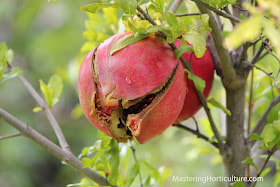Fig. 1 Epiphyllum trained on a grape vine
This month is show time for one of my cactus orchid (epiphyllum). Last year I trained the orange one to climb on one of the grapes. The position is good because it is near my kitchen window and when summer comes, the grape leaves will provide shade for this forest-loving plant. As a result - I must say, it's a lot easier to appreciate and take pictures of the flowers when they are at eye-level (Fig.1).
Fig. 2 Best pictures are taken on an overcast or rainy day.
These plants are very colorful when they bloom. Flowers come in neon colors, it is so difficult to take good pictures under on a clear day because they are like light in themselves. I was lucky this year because when we had several overcast days around their blooming period.
So what do we know about epiphyllum? If you are familiar with
Schlumbergera (Christmas Cactus), then you understand a lot of epiphyllum.
As an
epiphyte it is like an orchid and other aerial plants. They can grow on other plants such as trees that are strong enough to support their weight. As
lithophytes they can also grow on rock crevices where they feed on decomposing leaves and roots - just like other forms of orchids. Epiphyllums are generally of tropical origin and therefore the abundance of rain and atmospheric moisture allow these plants to survive without the roots touching the ground. When they are grown in drier areas like our place, they need to be provided with more water to compensate for the lack of humidity.
Fig. 3 Areole: a distinguishing characteristic of a cactus.
Epiphyllums belong in the cactus family. They exhibit the characteristic spines called
areoles (
Fig. 3)
. Areole is a specialized branch where a flower originates. Unlike on some of the more known cacti, the areoles on the epiphyllums are not very conspicuous but when handling the stems you would be notified of their presence in a not-so-pleasant way. The plants have flat succulent leaves that act as water storage - which is another survival mechanism for aerial plants. In their domesticated life, this feature makes them a good low-maintenance and low-water plant - desirable in a busy world.
In my garden, these plants do not get as much care as I would like them to. There are times when the plants look shriveled due to prolonged dry condition. The good thing is that they don't die easily. I think it would take a year of no water before they finally die :) They respond positively to a low dose of complete fertilizer. They are also prone to snail damage. To keep the plants looking perfect (if there is such a thing), a regular sprinkling of snail bait is necessary.
Fig. 4 The smaller buds on the left were aborted.
I also noticed that not all flower buds have a chance to open - some of them gets aborted (
Fig 4). At this point I don't know what causes it. I will do some literature review and find out what factors contribute to the unsuccessful flower formation.
Try a new plant in your garden this year,
you might end up liking it.




































